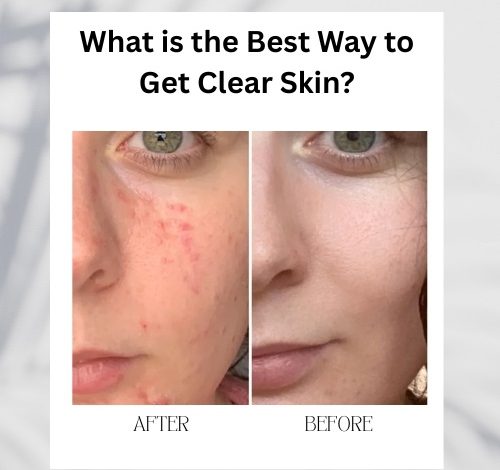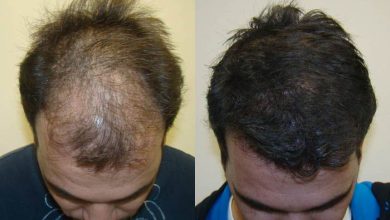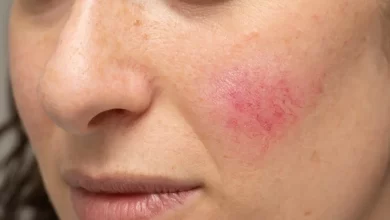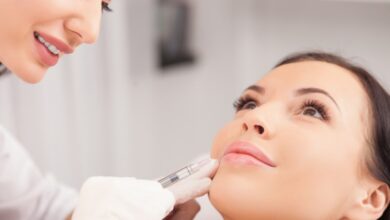What is the Best Way to Get Clear Skin?

Achieving clear skin is a goal shared by millions of people around the world. Whether you’re battling acne, dullness, blackheads, or uneven texture, the journey to radiant, healthy skin often seems overwhelming. The good news? You don’t need to spend a fortune or follow every skincare trend to succeed. In this comprehensive guide, we’ll break down the best way to get clear skin using evidence-based practices, natural remedies, and lifestyle changes.
Let’s dive deep into what truly works to help you get the clear skin you deserve.
Understanding Clear Skin: What Does It Really Mean?
Before exploring how to get clear skin, it’s important to understand what it is.
Clear skin refers to skin that is free of:
- Acne (whiteheads, blackheads, pimples, cysts)
- Blemishes and pigmentation
- Inflammation and redness
- Texture irregularities
- Excessive dryness or oiliness
Clear skin is also generally smooth, hydrated, and has an even tone. It’s a sign of both external care and internal health.
1. Start with a Solid Skincare Routine
Building an effective skincare routine is essential for maintaining clear skin. Here’s a simple, science-backed routine that works for most skin types:
A. Cleanse Twice Daily
Cleansing removes dirt, oil, makeup, and pollutants. Use a gentle, sulfate-free cleanser suited to your skin type:
- Oily/Acne-prone: Gel-based cleanser with salicylic acid
- Dry/Sensitive: Creamy, hydrating cleanser
- Combination: Gentle foaming cleanser
B. Exfoliate (2-3 Times a Week)
Exfoliation removes dead skin cells and helps prevent clogged pores.
- Use chemical exfoliants like AHAs (glycolic/lactic acid) or BHAs (salicylic acid).
- Avoid harsh scrubs that damage the skin barrier.
C. Moisturize Daily
Regardless of your skin type, moisturizing is key.
- Oily skin? Use lightweight, non-comedogenic gel moisturizers.
- Dry skin? Choose richer creams with ceramides and hyaluronic acid.
D. Sunscreen is Non-Negotiable
UV rays cause premature aging, pigmentation, and acne scars. Wear broad-spectrum SPF 30+ daily, even on cloudy days.
2. Use Targeted Treatments for Acne and Pigmentation
A. For Acne:
- Benzoyl Peroxide: Kills acne-causing bacteria
- Salicylic Acid: Unclogs pores and exfoliates
- Niacinamide: Reduces inflammation and controls oil
- Retinoids (Adapalene, Retinol): Stimulate cell turnover and reduce breakouts
B. For Pigmentation and Scarring:
- Vitamin C: Brightens and evens out skin tone
- Azelaic Acid: Targets redness, acne, and pigmentation
- Licorice Extract: Natural brightener
- Alpha Arbutin: Fades dark spots gently
Consistency is key — give treatments 4–12 weeks to show full results.
3. Nourish from Within: Diet for Clear Skin
The old saying “you are what you eat” rings especially true for skin health. What you consume directly affects inflammation, sebum production, and hormonal balance.
Foods that Promote Clear Skin:
- Omega-3 fatty acids (found in salmon, chia seeds, walnuts): Anti-inflammatory
- Vitamin A (sweet potatoes, spinach): Regulates skin cell turnover
- Zinc (pumpkin seeds, lentils): Helps heal acne
- Antioxidants (berries, green tea): Combat free radicals
- Probiotics (yogurt, kefir, kimchi): Balance gut microbiome
Foods to Limit:
- Dairy products: Can trigger hormonal acne in some individuals
- High-Glycemic foods (white bread, sugar, soda): Spike insulin and sebum
- Fast food and fried items: Linked with increased acne severity
Hydration is also vital. Aim for 8–10 glasses of water daily to flush toxins and maintain skin elasticity.
4. Lifestyle Changes for Long-Term Clear Skin
A. Get Enough Sleep
Poor sleep increases cortisol (stress hormone), which can worsen acne and inflammation. Aim for 7–9 hours of quality sleep per night.
B. Manage Stress
Chronic stress throws off hormone balance, contributing to acne and dull skin.
Try:
- Meditation
- Deep breathing exercises
- Journaling
- Light exercise like yoga or walking
C. Avoid Touching Your Face
Your hands carry bacteria and oils. Constantly touching your face can transfer these and clog pores.
D. Clean Your Pillowcases and Phones
Your pillowcase collects oil, dirt, and sweat — wash it every 3–4 days. Similarly, disinfect your phone screen daily.
E. Quit Smoking and Limit Alcohol
Both are skin enemies. Smoking restricts blood flow and destroys collagen, while alcohol dehydrates and inflames.
5. Natural Remedies for Clear Skin
While not all natural treatments are scientifically proven, many have shown promising results in reducing inflammation, soothing irritation, and promoting healing.
A. Tea Tree Oil
- A natural antiseptic with anti-inflammatory properties
- Dilute with a carrier oil before applying to acne
B. Aloe Vera
- Heals and hydrates
- Reduces redness and soothes irritated skin
C. Honey (Raw or Manuka)
- Antibacterial and humectant
- Use as a mask or spot treatment
D. Green Tea
- Drink daily or apply as a toner
- Contains EGCG, which reduces oil and inflammation
E. Apple Cider Vinegar (Diluted)
- Balances pH and has antibacterial properties
- Always dilute before applying and patch-test first
Caution: Always patch test natural remedies and avoid if you have sensitive or reactive skin.
6. Supplements to Support Clear Skin
Sometimes diet alone isn’t enough. Supplements can help fill nutritional gaps.
Recommended Supplements:
- Zinc: Reduces acne severity and inflammation
- Vitamin D: Low levels are linked to acne
- Probiotics: Improve gut health and reduce skin issues
- Omega-3 (Fish Oil): Helps reduce breakouts
- Evening Primrose Oil: May help hormonal acne in women
Always consult a healthcare provider before starting any new supplement.
7. Hormonal Balance and Clear Skin
Hormonal fluctuations are a major cause of acne, especially in women during:
- Menstruation
- Pregnancy
- PCOS
- Menopause
If you suspect hormones are affecting your skin:
- See a dermatologist or endocrinologist
- Consider hormonal testing
- Treatments may include oral contraceptives, spironolactone, or natural hormone-balancing approaches
Balancing hormones through stress management, diet, and sleep can also help tremendously.
8. Don’t Fall for Skin-Care Myths
The internet is filled with misinformation. Let’s bust a few myths:
❌ Myth: You should dry out acne with alcohol
✅ Truth: This damages the skin barrier and worsens acne.
❌ Myth: You need 10+ products to get clear skin
✅ Truth: A simple, consistent routine is more effective.
❌ Myth: Drinking more water alone clears skin
✅ Truth: Water helps, but it’s not a cure-all.
❌ Myth: Natural = always better
✅ Truth: Natural doesn’t mean safer or more effective. Some natural ingredients can irritate skin.
9. Professional Treatments for Stubborn Skin Issues
If home care isn’t enough, professional treatments can make a huge difference.
Popular Options:
- Chemical peels: Remove dead skin, reduce pigmentation and acne
- Microneedling: Stimulates collagen, improves scars and texture
- LED light therapy: Reduces acne-causing bacteria and inflammation
- Laser treatments: Target scars, dark spots, and vascular issues
- Prescription medications: Topical or oral retinoids, antibiotics, or hormonal treatments
Always consult a dermatologist for a personalized approach.
10. Be Patient and Stay Consistent
Skin transformation takes time. Don’t expect overnight miracles. Stick with a plan for at least 6–12 weeks before switching products. Keep a skin journal to track progress.
Here’s a realistic timeline:
- Week 1–2: Purging or mild irritation possible
- Week 3–6: Reduction in breakouts and oiliness
- Week 6–12: Improved texture, tone, and clarity
- 3+ months: Faded scars, reduced pigmentation, glowing skin
Final Thoughts: Your Journey to Clear Skin
So, what is the best way to get clear skin?
It’s a combination of:
- Gentle, consistent skincare
- Balanced nutrition and hydration
- Lifestyle adjustments
- Targeted treatments
- Professional help when needed
There is no one-size-fits-all solution. But with patience, education, and the right choices, clear skin is within your reach. Prioritize skin health over trends, and remember that healthy skin is beautiful skin.




